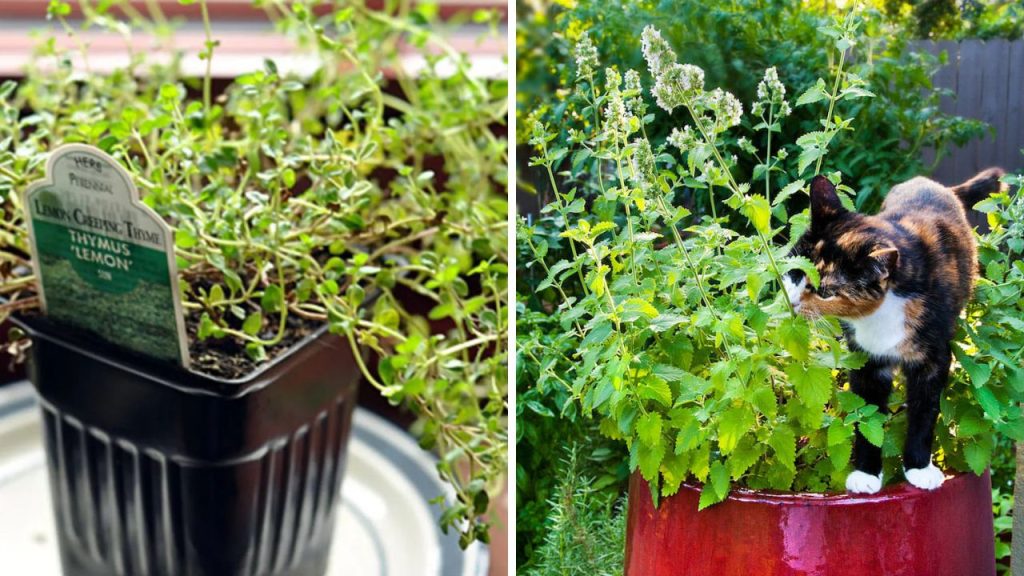When it comes to outdoor living, garden edging serves more than just a functional purpose. It creates clean, defined borders between your garden and lawn, gives your landscape a polished look, and enhances the overall aesthetic of your backyard. Whether you’re planning to give your front yard a makeover or spruce up your backyard, the right edging can elevate your garden’s appearance.
In this guide, we will explore 21 creative and practical garden edging ideas to help you create a beautiful and cohesive landscape. From rustic to modern, simple to elaborate, these ideas will inspire you to bring your vision to life. So, let’s dive into these stylish ways to edge your garden and make your outdoor space feel inviting and fresh.
1. Natural Stone Edging
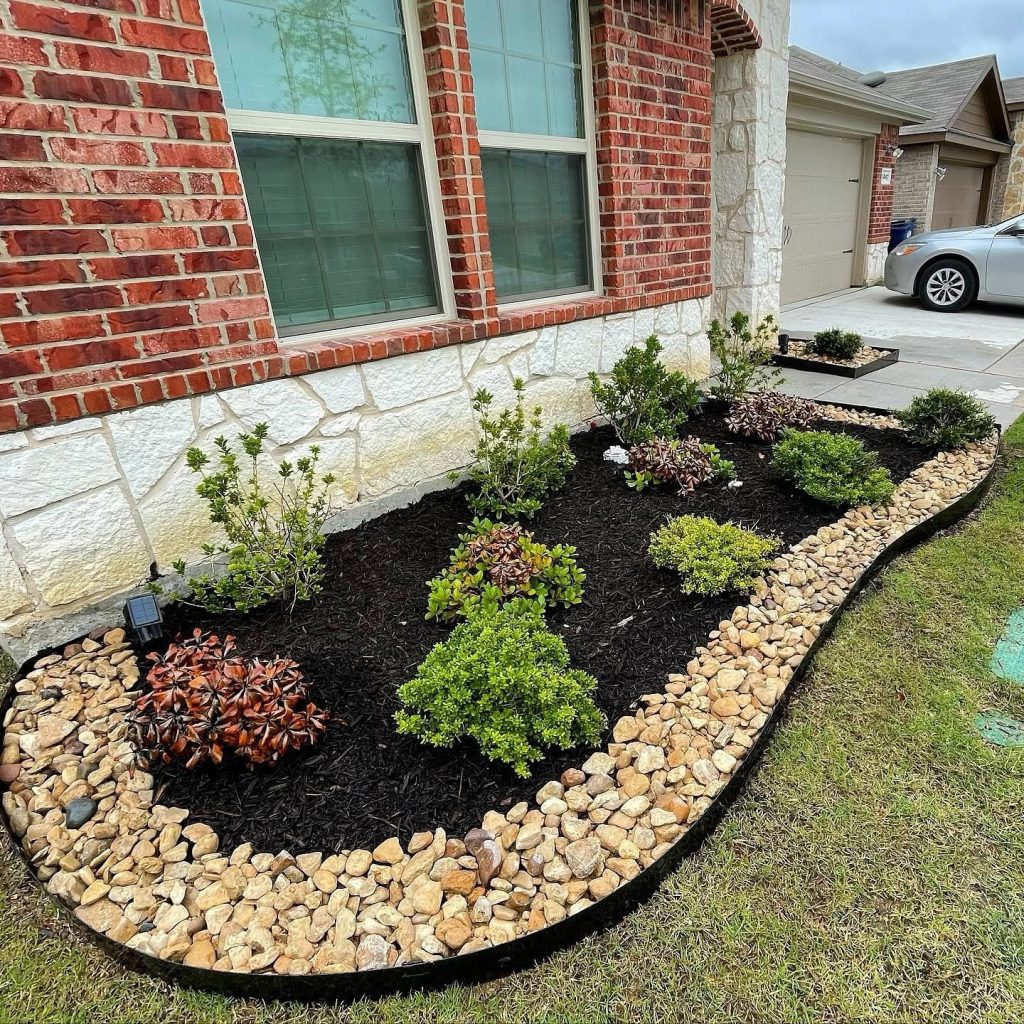
Natural stone edging is timeless and adds a rustic, earthy feel to your garden. This style works beautifully with any garden, especially those featuring natural landscaping, like wildflowers, herbs, and native plants. Whether you’re using flat or rounded stones, the variety of colors, textures, and sizes available allows you to customize your garden’s look.
The key to installing stone edging is to select materials that match your garden’s overall theme. For a more formal look, you can use larger, cut stones arranged neatly. On the other hand, if you’re aiming for a more casual, natural vibe, irregularly shaped stones will create a laid-back, organic appearance. Stone edging also serves a practical function by keeping soil in place and preventing grass from invading your garden beds.
Tip: Make sure to level the ground before setting the stones to avoid an uneven surface.
2. Wooden Plank Edging
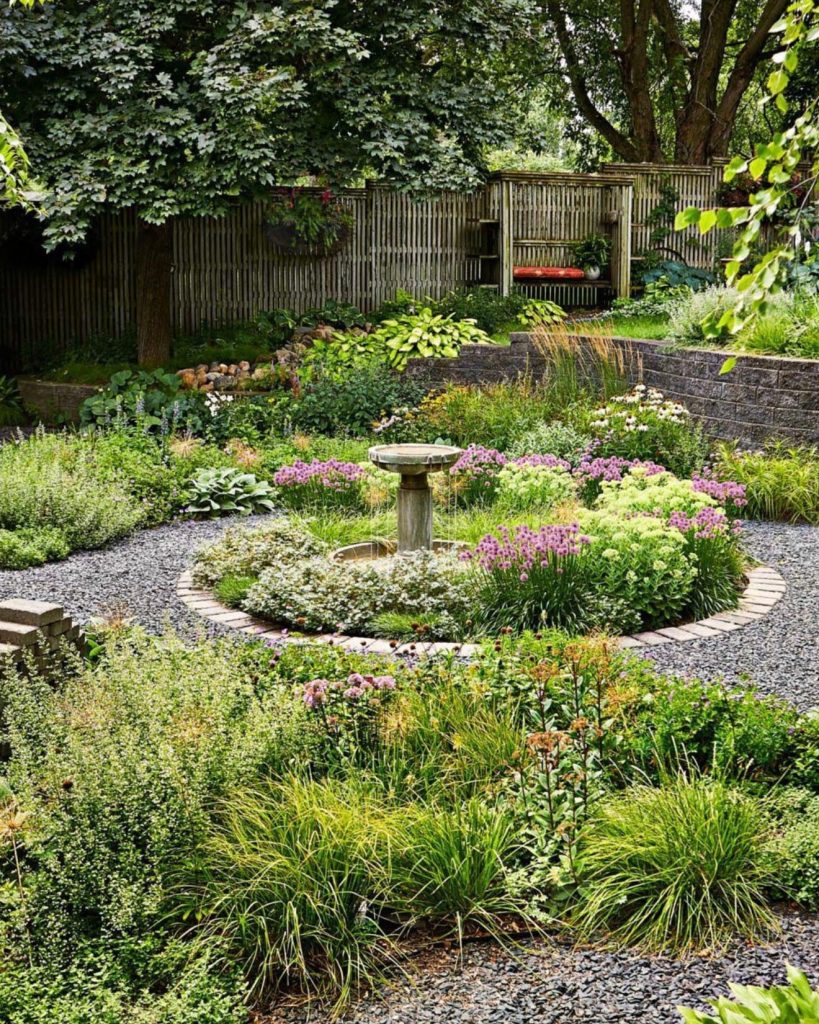
Wooden planks are a fantastic way to add a warm, natural touch to your garden. This type of edging is perfect for both rustic and modern garden designs, especially when paired with wooden raised garden beds or fencing. You can use treated timber or cedar for longevity, ensuring that the wood can withstand outdoor conditions without rotting.
Wooden planks create a clear visual distinction between different garden areas while blending seamlessly with the landscape. The simplicity of this edging makes it easy to install and maintain. Simply dig a shallow trench, lay the planks in place, and secure them with stakes or nails.
Tip: For a more refined look, stain the wood in a dark finish to complement the green tones of your plants.
3. Brick Edging
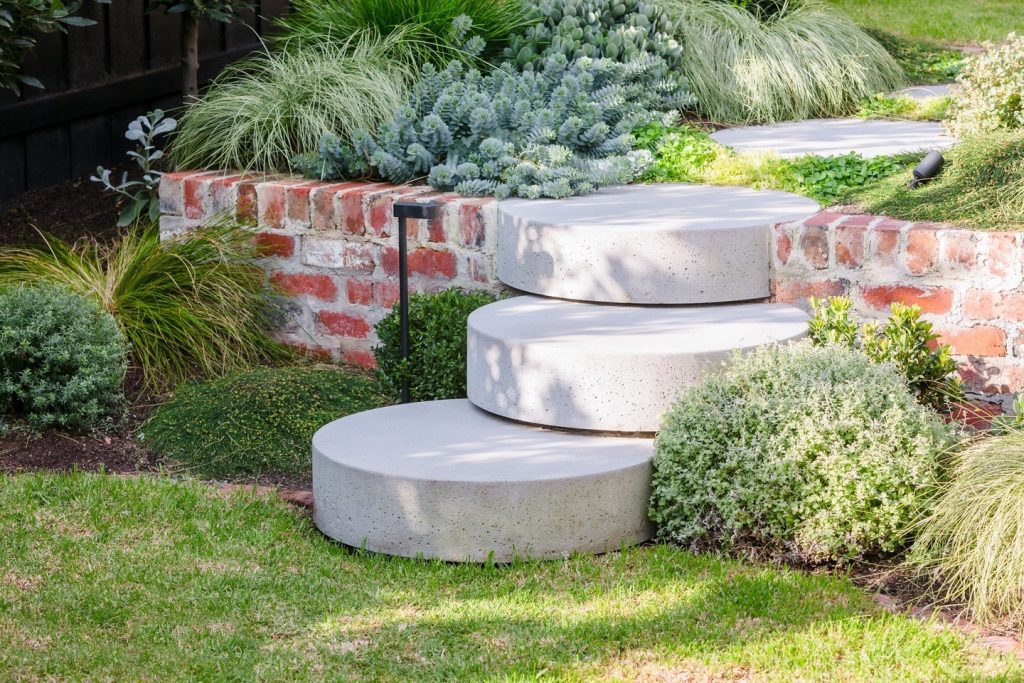
Brick edging offers a classic, elegant touch to your garden, providing both functionality and beauty. Bricks can be laid flat, standing upright, or angled to create a unique design. This type of edging works well with formal gardens, walkways, and flower beds, but it can also be used in more relaxed outdoor spaces for a charming contrast.
Brick is a durable and sturdy material that can withstand wear and tear. It is also versatile, allowing you to create curved or straight lines, depending on your design preference. For a more rustic vibe, consider using reclaimed bricks, which add character and history to your garden.
Tip: Use mortar or landscape adhesive for a more permanent edging solution or leave bricks loose for a more casual look.
4. Concrete Landscape Edging
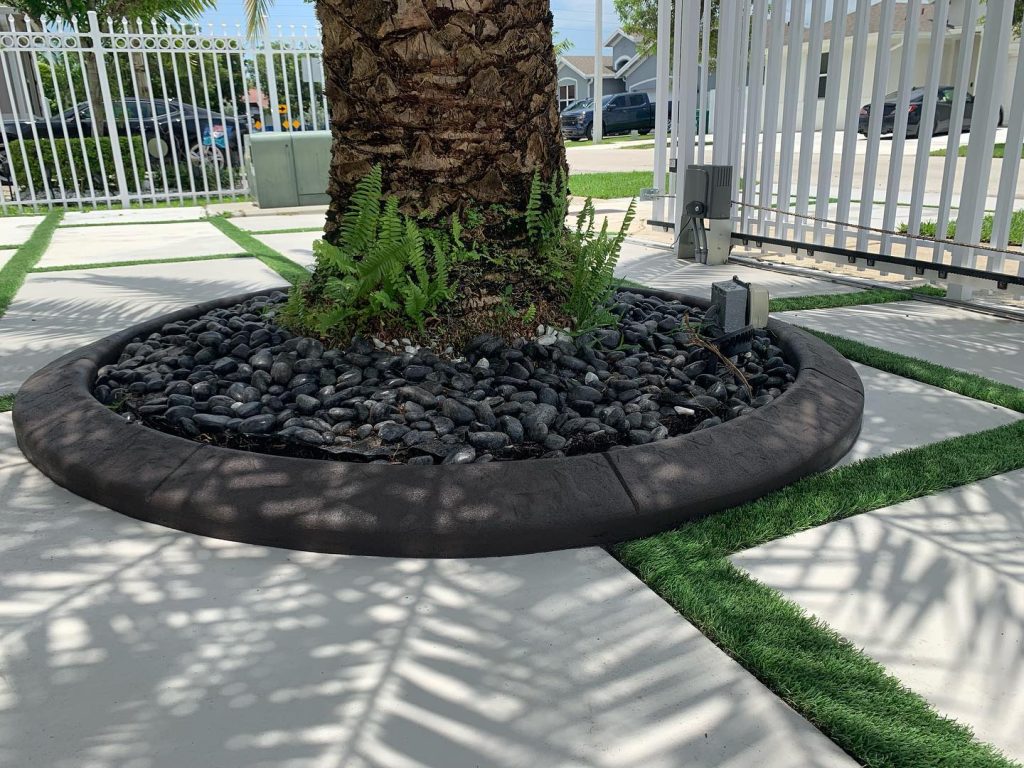
For a sleek, modern appearance, concrete landscape edging is an excellent choice. Concrete can be molded into various shapes, including straight lines or curves, giving you flexibility in your design. It is particularly effective for creating sharp, clean lines around garden beds, lawns, or pathways.
Concrete edging is durable and weather-resistant, making it ideal for areas with extreme temperatures or heavy rainfall. You can even customize concrete with stamps or stains to mimic the look of stone or brick, allowing you to create a tailored look that fits your garden style.
Tip: When installing concrete edging, make sure the edges are smooth and even to achieve a polished finish.
5. Gravel Edging
Source
Gravel is a versatile, low-maintenance material that can be used for garden edging in a variety of ways. It’s ideal for creating a natural border between your garden beds and lawn or to line pathways and walkways. The best part about gravel is its ability to complement any garden style—whether you’re going for a rustic, country feel or a more contemporary landscape.
For this type of edging, choose gravel that is in harmony with the colors of your garden. Pea gravel, for instance, is a popular option because of its smooth texture and warm tones. You can also use larger gravel stones to create more structure and definition along the borders.
Tip: To keep the gravel in place, lay a weed barrier fabric underneath before adding the gravel.
6. Metal Edging
Source
Metal edging offers a sleek, contemporary option for creating crisp, clean borders around your garden. This type of edging is ideal for modern gardens, where you want to maintain sharp, defined lines. Available in various metals like steel, aluminum, and copper, metal edging is both durable and long-lasting.
One of the best features of metal edging is its flexibility. It can be bent to create curves or straight lines to fit the shape of your garden beds. Metal edging also helps prevent grass and weeds from creeping into your garden, keeping your flower beds neat and tidy.
Tip: Choose rust-resistant metal for a longer-lasting finish.
7. Rubber Edging
Source
Rubber garden edging is an eco-friendly option that’s made from recycled tires, making it a sustainable and cost-effective choice. Rubber is highly flexible and easy to install, making it perfect for gardens with irregular shapes or curves. It also has a softer appearance compared to other materials, which can be appealing in more natural or family-friendly spaces.
Rubber edging is particularly useful for keeping mulch and soil in place, as it creates a firm boundary around your garden without shifting over time. Additionally, it is weather-resistant, lightweight, and requires very little maintenance.
Tip: Opt for dark-colored rubber edging to blend in seamlessly with the rest of your landscape.
8. PVC Plastic Edging
Source
PVC plastic edging is a lightweight, affordable, and easy-to-install option that is perfect for defining garden beds, lawns, and walkways. Available in various designs, from flexible rolls to rigid strips, PVC plastic edging is ideal for creating straight or curved lines with minimal effort.
One of the key benefits of PVC edging is its low maintenance requirements. It doesn’t rot, fade, or become brittle like wood or metal, making it a great option for those looking for a long-lasting, weather-resistant solution. Additionally, PVC edging is resistant to weeds, which helps keep your garden neat and tidy.
Tip: Choose PVC edging with a natural look, such as faux wood grain, to mimic the appearance of more expensive materials.
9. Shell or Pebble Edging
Source
Shell or pebble edging is a beautiful and eco-friendly way to add texture and interest to your garden. Perfect for coastal-themed gardens, this edging uses natural shells or pebbles to create a beachy, laid-back vibe. It works well in gardens with Mediterranean or tropical plants, where a casual, organic border is desired.
The smooth, rounded texture of shells and pebbles offers a soft, contrasting element against the lush green plants and shrubs in your garden. This edging type is particularly suited to informal gardens and can be used in combination with other materials like bricks or wood for added visual interest.
Tip: Use shells or pebbles in shades of white, beige, or grey for a calming, neutral look that complements your garden.
10. Cinder Block Edging
Source
Cinder blocks are an affordable and durable option for garden edging. Their industrial appearance adds a modern, urban feel to your garden while providing a sturdy boundary. You can stack the blocks in a straight line or arrange them in a staggered pattern for a more unique look.
Cinder block edging works especially well in urban or contemporary gardens where you want to add structure and definition. You can even paint or stain the blocks to match the color scheme of your outdoor space, creating a custom look that fits your style.
Tip: To create a more decorative touch, you can hollow out some of the blocks and plant small succulents or flowers inside them.
11. Log Edging
Source
Log edging brings a rustic, woodland feel to your garden, making it perfect for natural or cottage-style landscapes. This type of edging uses whole logs or cut pieces of logs arranged along the edges of your garden beds. It is an excellent choice for adding texture and a sense of natural charm to your outdoor space.
Log edging works well in gardens with native plants, wildflowers, or vegetable patches, helping to blend the garden into its surroundings. The natural, weathered look of logs complements the greenery of plants while providing a solid structure for keeping soil and mulch in place.
Tip: Choose logs that are naturally rot-resistant, like cedar or redwood, for a long-lasting option.
12. Paver Edging
Source
Paver edging is another timeless and sturdy option that works well in both modern and traditional gardens. Pavers come in a variety of shapes, sizes, and materials, including concrete, natural stone, and brick, making it easy to find an option that complements your garden’s aesthetic. Pavers can be laid in a simple, straight line or arranged in more creative patterns, depending on the look you want to achieve.
The great thing about pavers is their durability. They create a strong barrier between garden beds and lawns, preventing grass from creeping in and keeping mulch and soil contained. Plus, pavers are resistant to wear and tear, ensuring that your garden edging will last for years to come.
Tip: Opt for pavers with a textured surface to add visual interest and prevent slipping in areas with foot traffic.
13. Bamboo Edging
Source
For a more exotic, Asian-inspired look, bamboo edging is an excellent choice. Bamboo is lightweight, flexible, and eco-friendly, making it perfect for creating curved or straight lines around your garden beds. It adds a unique and natural element to your landscape, evoking the feeling of a tranquil zen garden.
Bamboo also serves as a great alternative to traditional wood or metal edging because it’s sustainable and requires little maintenance. When installing bamboo edging, ensure that you choose treated bamboo to prevent it from rotting over time, especially in damp environments.
Tip: Pair bamboo edging with other natural materials like stone or wood for a more eclectic, layered look.
14. Slate Edging
Source
Slate is a luxurious and elegant material that can be used to create sharp, clean lines around your garden beds or walkways. With its rich colors and smooth texture, slate adds sophistication and visual appeal to any garden. It works particularly well in modern or minimalist garden designs, where a simple, refined appearance is desired.
Slate can be installed as flat stones or in a stacked formation, depending on your preference. The natural variations in color—ranging from deep purples to cool greys—allow you to create a unique and personalized garden edge that complements the surrounding plants and flowers.
Tip: Consider using slate tiles or slabs for a more sleek, polished finish that will elevate your garden’s appearance.
15. Corkscrew Willow Edging
Source
For a more whimsical and natural look, corkscrew willow trees can be used as a unique edging solution. These trees have twisted, curly branches that can be pruned and shaped to create a distinctive, organic boundary. Corkscrew willow edging adds a sense of movement and drama to your garden, making it an ideal choice for more informal or artistic garden designs.
This type of edging works particularly well when paired with other natural elements like wildflowers, grasses, or rocks. It’s also a great option for creating a soft, flowing edge along curved garden beds or pathways.
Tip: Keep the corkscrew willow pruned and shaped to maintain its distinct twisted form.
16. Terracotta Pot Edging
Source
Terracotta pots offer a charming and affordable solution for garden edging. Their warm, earthy tones work beautifully in Mediterranean or cottage-style gardens, bringing a rustic yet refined feel to your outdoor space. You can stack the pots along the edges of your garden beds or line them up horizontally to create a seamless boundary.
One of the benefits of terracotta pot edging is its versatility. You can fill the pots with small plants like succulents, herbs, or flowers, adding extra greenery and color to your garden. This creates a layered, textured look that enhances the visual appeal of your garden.
Tip: Use large terracotta pots at the corners of your garden to create focal points and add structure to your space.
17. Woven Wire Edging
Source
Woven wire edging is a modern and practical solution for creating strong, durable boundaries around your garden beds. This type of edging involves using a wire mesh that is woven into a fence-like structure. Woven wire is flexible and can be molded to fit the shape of your garden, allowing you to create smooth curves and angles with ease.
This type of edging is especially useful for gardens where you need to keep out larger animals, such as rabbits or deer, while still maintaining a visually appealing border. The minimalist design of woven wire works well in contemporary and industrial garden styles.
Tip: For added stability, you can line the base of the woven wire with rocks or stones.
18. Greenery Edging
Source
Greenery edging uses plants as a natural border for your garden beds. This can include low-growing shrubs, perennial flowers, or even ground covers like moss or creeping thyme. The beauty of this edging option is that it blends seamlessly into the landscape, creating a soft, organic look that enhances the overall beauty of your garden.
Greenery edging is perfect for creating a lush, garden-like feel, especially in more natural or woodland gardens. It works well for adding texture and color to the edges of flower beds or around patios and walkways.
Tip: Choose plants that require little maintenance and are suited to your local climate to ensure your greenery edging remains healthy and vibrant.
19. Vintage Fence Edging
Source
For a whimsical, nostalgic touch, vintage fence edging can be a charming way to add character to your garden. Using reclaimed wooden fence panels or wrought iron gates, this edging brings an old-fashioned feel to your landscape. You can even repurpose sections of old fencing to create a sustainable, eco-friendly border around your garden beds.
Vintage fence edging works well in cottage or shabby chic gardens, where you want to evoke a sense of timeless beauty and charm. Additionally, the fence can be adorned with climbing vines or flowering plants to enhance its rustic appeal.
Tip: Paint the fence in a soft, pastel color to make it pop against the greenery of your garden.
20. Rope Edging
Source
Rope edging is a unique and affordable way to create a soft, informal boundary in your garden. Made from durable, weather-resistant rope, this type of edging adds a nautical or coastal feel to your landscape. Rope edging works particularly well for gardens that have a beachy or tropical theme.
The flexibility of rope allows you to create curved or straight lines with ease. It’s also easy to install and maintain, making it an ideal choice for casual garden designs. Plus, rope adds texture and interest to your garden without overpowering the plants.
Tip: Choose thick, braided rope for a more robust and eye-catching effect.
21. Living Fence Edging
Source
A living fence, made from fast-growing plants like ivy, climbing roses, or jasmine, creates a beautiful and functional garden edge that changes with the seasons. This natural option provides privacy, adds color, and promotes biodiversity in your garden. Living fences are also great for creating soft boundaries around garden areas or along pathways.
This type of edging is perfect for those looking for a low-maintenance, eco-friendly alternative to traditional materials. The plants will continue to grow and flourish, offering a sustainable and ever-evolving border.
Tip: Prune the plants regularly to ensure they maintain a neat, well-defined shape.
Conclusion
Garden edging is an essential yet often overlooked element of outdoor living design. Whether you’re aiming for a modern, minimalist look or a rustic, natural vibe, the right edging can make all the difference in enhancing your garden’s visual appeal. From stone and wood to greenery and rope, there are endless options to suit every style and budget.
By using these 21 creative garden edging ideas, you can define your garden beds, create stunning borders, and improve the functionality of your outdoor spaces. Remember, the key is to choose materials and designs that reflect your unique style and complement the existing elements of your garden.
Whichever edging idea you choose, make sure it’s both practical and aesthetically pleasing. After all, your garden should not only be a place for plants to thrive but also a space that you can enjoy year-round. Happy gardening!
